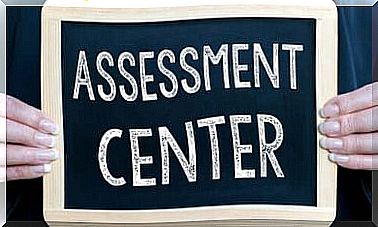The Paradigm Shift In Education

It is absurd to think that behind the incredible technological advances that have taken place in recent decades, there is a sector of society that can be “contaminated” by its effect: the education system.
In many cases, technology advances faster than our ability to update ourselves, although this does not happen with new generations. These generations have already grown up with a bottle in one hand and a tablet in the other.
It’s not that some sectors that are more or less interested in change are doing their best. It is our children and young people who bring this change with them, in their way of understanding and relating to the world that has already changed.
An educational system that does not advance at the same pace and that is in keeping with this artificial but real medium can cause children to lose valuable time that cannot be recovered.
What does the paradigm shift in education consist of?
Mainly in the fact that the traditional linear education system no longer has space in our midst. We spent several years intuiting that changes would come, but not happen. Teachers, parents and students themselves were blamed for this.
The dropout rate is very high. Our kids get bored at school (one might think it’s always been that way, which is no excuse for having to keep it that way).
It’s not a matter of tweaking or adding on to what’s already done. We speak of a profound change in educational institutions. Changes in the means used, in the way content is made available to students and in the way it is acquired.
Also a change in the values of which we are models. A shift in ways to acquire skills. This was not a priority in the traditional educational system. However, our young people will need this in their adult lives.

linear education and horizontal education
These days, our children learn more online and with their friends than they do at school. The teacher no longer has the information. Information is on many screens, on many portals. Children know how to get it; that is, when they are interested, they don’t have to wait for someone to teach them.
We will probably see an important change in the figure of the teacher in the coming years. Today’s students demand tutors to guide them, not to facilitate knowledge that is already within their grasp.
Linear education is based on a transmission of information totally disconnected from emotional meaning. This type of education presupposes that the child is ignorant and that it needs to be completed. It emphasizes the difference between teacher and student. There is no dialogue, no creativity. Learning is volatile, the student is passive.
The new trends in horizontal education propose that it is the student who seeks knowledge. They argue that the student is capable of thinking and that learning from experience is vital. The teacher has to focus more on skills than content, and know how to solve learning situations.
Emotions and Motivation
What we have already intuited for a long time has been proven to be a reality. Positive value emotions improve our understanding and memory while motivating learning. Emotions foster learning as they reinforce synaptic connections and the activity of our neural networks.
In this sense, neuroeducation is a valuable tool that will facilitate the work of teachers when it comes to developing the personal skills and aptitudes of students and thus facilitating the learning process.
It will make them aware of how the brain works and its relationship with the behavior and pace of student learning.
Furthermore, it is very positive that teachers know how a brain learns, how it controls emotions or processes information. The time to plan a lesson based on a book is behind us.
Facing the challenges of the education system in the 21st century
There is a significant deficit of professional profiles to match the needs of today’s companies. Our professional environment has changed a lot.
Our old educational system was based on the industrial revolution and its professional needs. We can no longer train young people in this way, as the job market needs hands with different skills. More than repeating, it’s about innovating with intelligence.
Creativity, teamwork, conflict resolution, critical thinking, leadership and innovation skills are skills that companies look for in curricula.
So what you’ve studied is important, but how you present yourself and what you’re able to do is even more important. This is what will allow you to face your future professional reality.









